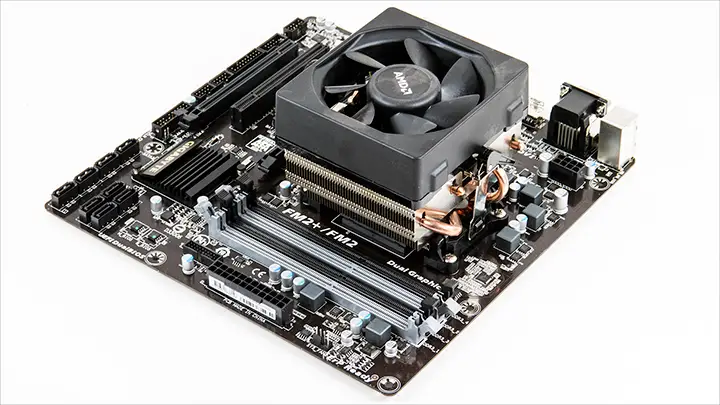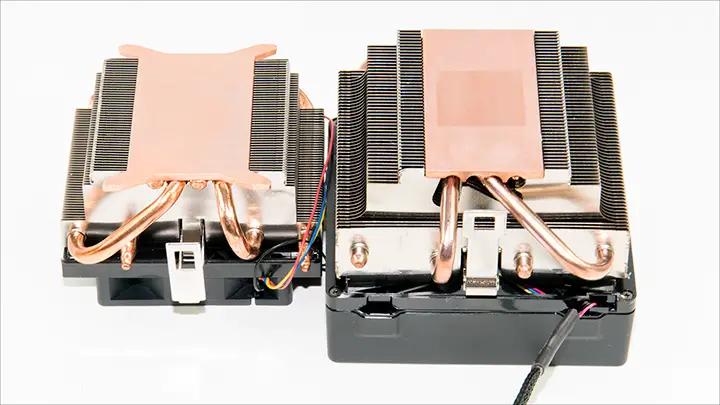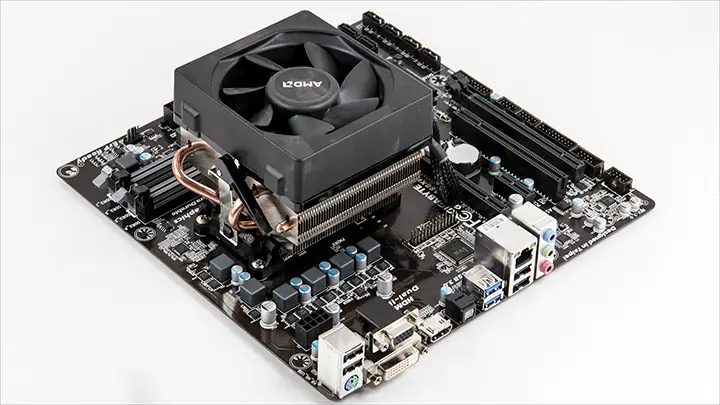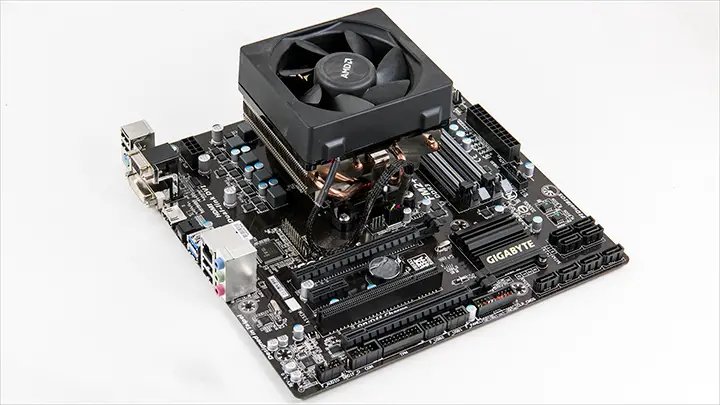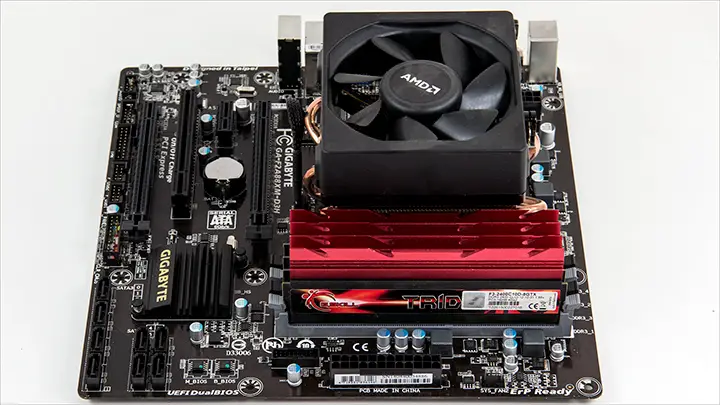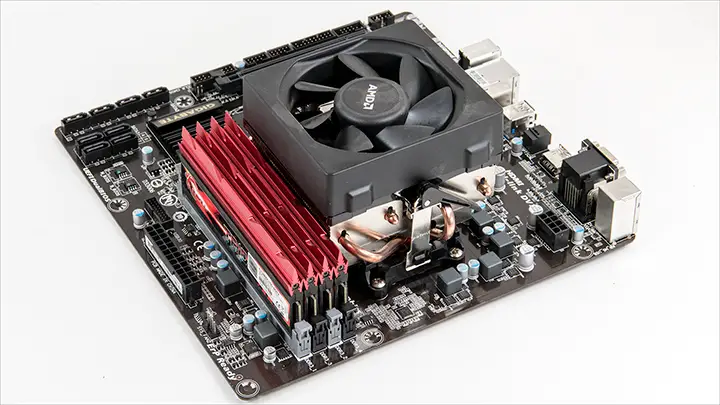Even before we removed this cooler from its cardboard box we knew that AMD had created something special… as this heavy box was downright massive. This impression was then further reinforced once we actually looked at it. So much so we had to double check that yes it does indeed have an AMD sticker on it as we thought that it might have been a new aftermarket CPU cooling solution that somehow got mixed in with the rest of the shipment!
To be honest the sheer weight of this cooler is reassuring but it was the size that really grabbed our attention. For a ‘stock’ cooler it is massive and it really does look more like an aftermarket cooler. Better still is while the fan and fan shroud are now upsized – more on this in a moment – the aluminum fin array has also gotten the jumbo-sized treatment. AMD states that this new cooling tower, and yes, it is now large enough to be a downdraft tower cooling array, offers 24% more surface area but that is only half the equation… or maybe even only a quarter. Yes more surface area means higher efficiency and transferring heat from the array to the air, but that is putting the cart before the horse.
The other part of the equation is the additional weight. To be specific this CPU cooling solution tips the scales in at 455grams, whereas the older/traditional AMD stock cooler was 330grams. This is a 37.9% increase and as every enthusiast knows the more metal there is to transfer heat from the IHS to the cooling array the cooler the CPU cores will be… which in turn means a lower fan speed is need to keep the CPU cool. Yes it is a positive feedback loop and AMD knocked it out of the park.
By flipping the wraith over we can see that what AMD did was take the original… and simply made the fin array larger. Though this is overly simplistic as the fins are solid aluminum and AMD’s engineers simply made them taller and wider…and added more of them. Also on the positive side, the base of the wraith is cooper and not aluminum – something that Intel should take note of – and uses four heat pipes. This is the same number as the original but they are longer and thus can handle even more heat before being overloaded.
The other half of the equation is the fan. The best that could be said about the original AMD fan was that at least it was better than Intel’s… but that is not saying much. This new fan however is bloody impressive all on its own. To be precise this is a Delta 92mm fan that is rater for 60CFM at 3200rpm; however equally impressive is it is rated for an impressive 5.34mm of static pressure! What this means is even at lower rpms it still will have plenty of power to push the air through the fin array – something that the older AMD fan also had troubled with.
To further improve the fans abilities to push air through the fin array AMD has included a nice large fan shroud that removes the dead zone in front of the fan hub and evens out the fan pressure. As an added bonus, thanks to rubber mounts used, there basically no fan vibration noise created.
Now the one downside to using a larger CPU cooler is that it can cause installation issues. Thankfully this is not an issue with the AMD wraith… or at least not as long as you are not sticking it on a mITX motherboard and trying to shoehorn it into a shoebox sized case. Other than this this cooler is every bit as easy to use as the original (it even uses the same stock mounting setup), and does not block RAM or GPU slots. Color us impressed.




